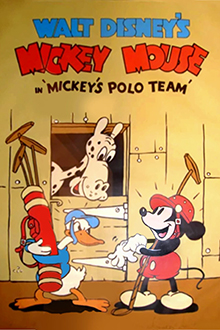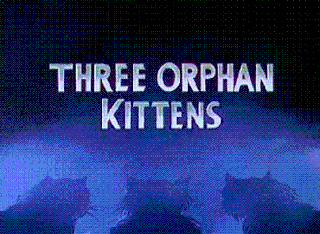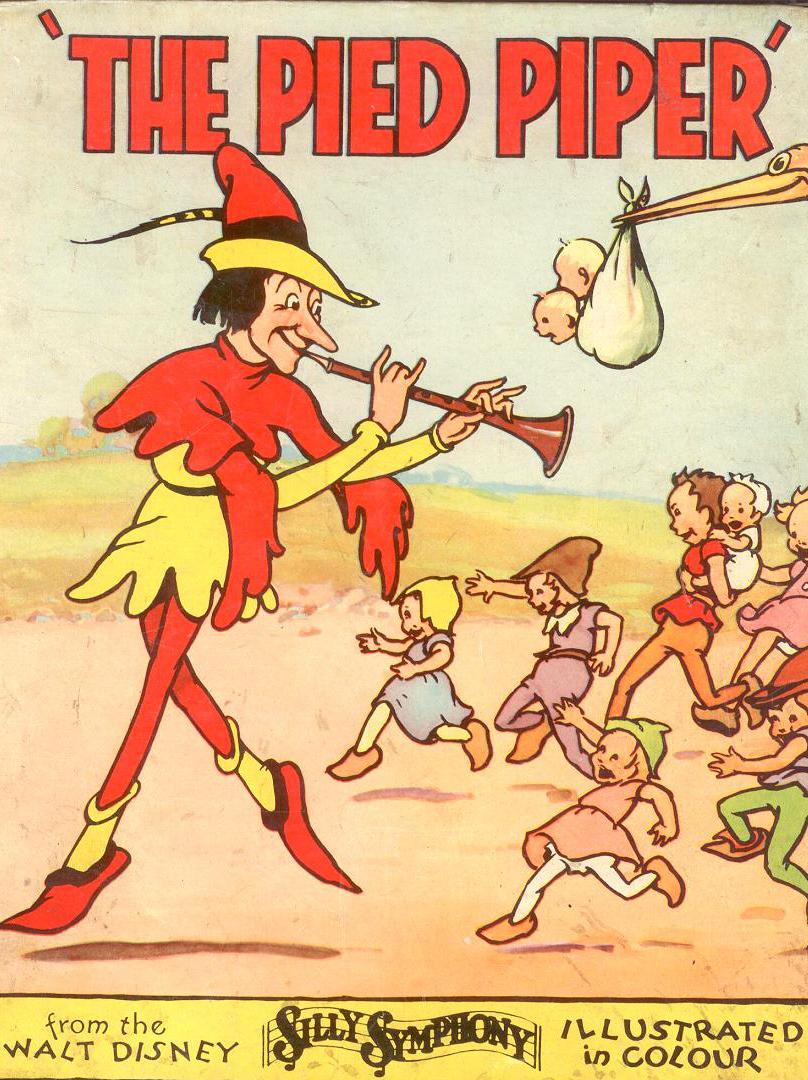Silly Symphony is an American animated series of 75 musical short films produced by Walt Disney Productions from 1929 to 1939. As the series name implies, the Silly Symphonies were originally intended as whimsical accompaniments to pieces of music. As such, the films usually did not feature continuing characters, unlike the Mickey Mouse shorts produced by Disney at the same time. The series is notable for its innovation with Technicolor and the multiplane motion picture camera, as well as its introduction of the character Donald Duck, who made his first appearance in the Silly Symphony cartoon The Wise Little Hen in 1934. Seven shorts won the Academy Award for Best Animated Short Film.

Merrie Melodies is an American animated comedy short film series distributed by Warner Bros. Pictures. It was part of the Looney Tunes franchise and featured many of the same characters. It originally ran from August 2, 1931, to September 20, 1969, during the golden age of American animation, though it was revived in 1979, with new shorts sporadically released until June 13, 1997. Originally, Merrie Melodies placed emphasis on one-shot color films in comparison to the black-and-white Looney Tunes films. After Bugs Bunny became the breakout character of Merrie Melodies and Looney Tunes transitioned to color production in the early 1940s, the two series gradually lost their distinctions and shorts were assigned to each series randomly.

Mickey's Polo Team is a 1936 American animated short film produced by Walt Disney Productions and released by United Artists. The cartoon features a game of polo played between four Disney characters, led by Mickey Mouse, and four cartoon versions of real-life movie stars. It was directed by David Hand and was first released on January 4, 1936. The film was inspired by Walt Disney's personal love of polo. It was the 80th Mickey Mouse short film to be released, and the first of that year.

A Corny Concerto is a 1943 Warner Bros. Merrie Melodies directed by Bob Clampett. The short was released on September 25, 1943, and stars Bugs Bunny, Porky Pig, Elmer Fudd and Daffy Duck.

Academy Award Review of Walt Disney Cartoons is an American animated package film released in the United States on May 19, 1937, for a limited time to help promote the upcoming release of Snow White and the Seven Dwarfs. It was a collection of five Oscar-winning Silly Symphonies shorts, bridged together with title cards and a narrator. Like The Many Adventures of Winnie the Pooh, each of the cartoons had been released on their own at first before being collected together as one film. The separate cartoon shorts are now available on DVD. In addition, the film is 41 minutes long, just like Saludos Amigos. However, while this film is fully animated, Saludos Amigos would be far shorter without the live-action sequences. It is considered the first feature-length film in the Walt Disney Pictures filmography.

Three Little Pigs is a 1933 animated short film released by United Artists, produced by Walt Disney and directed by Burt Gillett. Based on the fable of the same name, the Silly Symphony won the 1934 Academy Award for Best Animated Short Film. The short cost $22,000 and grossed $250,000.

Three Little Wolves is a Silly Symphony cartoon. Released on April 18, 1936, and directed by Dave Hand. It was the third Silly Symphony cartoon starring the Three Little Pigs. It is loosely based on The Boy Who Cried Wolf. It introduces the Big Bad Wolf's sons, the Three Little Wolves, all of them just as eager for a taste of the pigs as their father.
Elmer Elephant is a Silly Symphony cartoon short produced by The Walt Disney Company, directed by Wilfred Jackson and released on March 28, 1936.
The first wave of Walt Disney Treasures was released on December 4, 2001. It includes four different DVD sets.
Walt Disney's Timeless Tales is a series of DVDs by Walt Disney Home Entertainment. Each release features around one-hour of Disney animated short films featuring classic fairy tale adaptations. In contrast to the chronological nature of the Walt Disney Treasures line, each release includes cartoons in no particular order.

The Tortoise and the Hare is an American animated short film part of the Silly Symphony series, released on January 5, 1935, by United Artists, produced by Walt Disney and directed by Wilfred Jackson. Based on an Aesop's fable of the same name, it won the 1934 Oscar for Best Short Subject: Cartoons. This cartoon is also believed to be one of the inspirations for Bugs Bunny by Warner Bros., who first appeared in 1940.

Three Orphan Kittens is a 1935 animated short film in the Silly Symphonies series produced by Walt Disney Productions. It was the winner of the 1935 Oscar for Academy Award for Best Short Subject (Cartoons). It was followed in 1936 by a sequel, More Kittens.

The Pied Piper is an American Pre-Code animated short film based on the story of the Pied Piper of Hamelin. The short was produced by Walt Disney Productions, directed by Wilfred Jackson, and released on September 16, 1933, as a part of the Silly Symphonies series.
The Flying Mouse is a Silly Symphonies cartoon produced by Walt Disney, directed by David Hand, and released to theatres by United Artists on July 14, 1934. The use of color here was rather innovative as it is set during the course of a single day.
Who Killed Cock Robin is a Silly Symphonies short released on June 26, 1935, by United Artists, produced by Walt Disney and directed by David Hand. It is based on the nursery rhyme Who Killed Cock Robin?. It was nominated for the Best Short Subject (Cartoons) Oscar but lost to Disney's own Three Orphan Kittens.
Funny Little Bunnies is a Silly Symphonies animated Disney short film. It was released in 1934.

The Goddess of Spring is a 9-minute Silly Symphonies animated Disney short film. The Symphony is imbued with operatic themes and is often cited as melodramatic. It was released in 1934, and its production was important to the future development of Disney's Snow White and the Seven Dwarfs animation. Each Silly Symphony was a technological marvel at the time and proceeded to further advancements in the animation industry.
Broken Toys is an 8-minute 1935 animation by Disney in the Silly Symphonies series. The toys in the story include caricatures of W.C. Fields, Zasu Pitts, Ned Sparks and Stepin Fetchit. Broken Toys was originally scheduled to follow Elmer Elephant and Three Little Wolves but was moved ahead of these titles in order to have it ready for a Christmas release.

Silly Symphonies: The Complete Disney Classics is a book series which reprints Walt Disney's Silly Symphony Sunday comic strip, drawn by several different Disney artists from 1932 to 1945. The strip was published by King Features Syndicate. The strip often introduced new Disney characters to the public, including its first comic character, Bucky Bug. The series was published by The Library of American Comics from 2016 to 2019.
Silly Symphony is a weekly Disney comic strip that debuted on January 10, 1932, as a topper for the Mickey Mouse strip's Sunday page. The strip featured adaptations of Walt Disney's popular short film series, Silly Symphony, which released 75 cartoons from 1929 to 1939, as well as other cartoons and animated films. The comic strip outlived its parent series by six years, ending on October 7, 1945.











